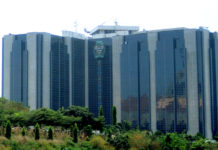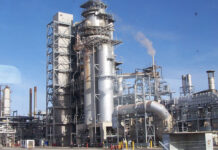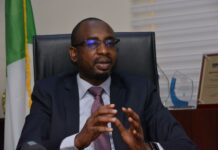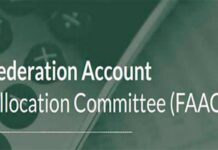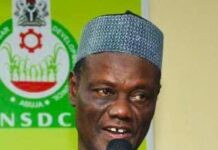 INTRODUCTION
INTRODUCTIONThe National Emergency Management Agency (NEMA) was established via Act 12 as amended by Act 50 of 1999, to manage disasters in Nigeria. The establishment of NEMA about ten years ago usher in a new dawn in disaster management from the hitherto narrow practice of relief distribution.
Bracing up to the challenges of its given mandates, efforts were continuously made in putting together the necessary structures and sustained refocusing of programmes towards efficient and effective disaster management in the country.
HISTORY OF THE AGENCY
Disaster management in Nigeria dates back to 1906 when the Police Fire Brigade (now Federal Fire Services) was established to function beyond fire fighting role to saving of lives, properties and provision of humanitarian services in emergencies.
However, between 1972 and 1973 Nigeria was hit by a devastating drought which affected the socio- economy of the Nation and resulted to loss of lives and property worth millions of Naira. This made it imperative for the government to consider a response body to take care of disaster issues because of its serious and adverse effects to the life of her citizens. Thus the establishment of National Emergency Relief Agency (NERA) by Decree 48 of 1976, which was conceived as an Inter-Ministerial Committee, charged with the task of collecting and distributing relief materials to disaster victims. This function of NERA with regards to Disaster Management was very limited because of the scope under which it operated.
In 1990, Nigeria along with other member countries of the United Nations set up a National Committee for the International Decade for Natural Disaster Reduction (IDNDR). The Nigerian Inter-Ministerial body set up four sub-committees, with NERA retaining membership in each sub-committee, to address natural disasters reduction in Nigeria. A working group was also inaugurated with a representative from NERA to work out a situation report on Natural Disaster reduction for the country for the remaining years in the decade. This report was submitted in May 1994 and after this submission, the committee ceased to exist. This brought back the task of drawing up a National Agenda on the issue of disaster management in all its ramifications.
In 1993, the government, based on the objectives and goals of the IDNDR decided to expand the scope of managing disasters to include all the areas of disaster management. This included prevention, mitigation, response and recovery. Therefore, Decree 119 of 1993 thus raised the Status of the Agency to an independent body under the Presidency, with the functions of formulating general policies and guidelines relating to management of disasters in Nigeria and friendly countries.
In 1997, having realized the obvious shortcomings of NERA in the management of disasters, the management of NERA under the leadership of the then Director, Mrs. Oluremi Olowu, organized a National Workshop involving major stakeholders in disaster management in Nigeria including Oil Companies, construction companies, government and non-governmental organisations and representatives of UNDP. The Workshop deliberated extensively on a number of issues and considered several critical success and survival factors for effective disaster Management in Nigeria and came up with a communiqué¨ which:
a) Noted the need to expand the functions of the National Emergency Relief Agency (NERA) to include holistic management of Disasters in the country, to amend the decree setting up NERA and to change the name of the Agency to National Emergency Management Agency (NEMA).
b) Noted the need to structure the new agency along the following areas.
-
Search and Rescue
-
Policy and Strategy
-
Information, Education and
-
Prevention
-
Administration, Finance and Logistics
-
Relief and Rehabilitation
-
Research and Planning
c) Noted that appropriate budgetary allocations should be made for the operations of the Agency.
d) Suggested the need for an Interim committee to be put in place immediately to study the deliberations and recommendations of the workshops towards implementation.
The recommendations led to the establishment of NEMA by the Federal Government in March 1999 via Act 12 as amended by Act 50 of 1999.
FUNCTIONS OF NEMA
The Act vested the authority of managing disasters in Nigeria NEMA. According to the enabling law; the Agency shall among the other things,
(a) Formulate policy on all activities relating to the disaster management in Nigeria and co-ordinate the plans and programmes for efficient and effect response to disasters at national level;
(b) Monitor the state of preparedness of all organization or agencies which may contribute to disaster management in Nigeria;
(c) Collate data from relevant agencies, so as to enhance forecasting, planning and field operation of disaster management;
(d) Educate and inform the public on disaster prevention and control measures;
(e) Co-ordinate and facilitate the provision of necessary resource for Search and Rescue and other forms of disaster curtailment activities in response to distress calls;
(f) Co-ordinate the activities of all voluntary organizations engaged in emergency relief operations in any part of the Federation;
(g) Receive financial and technical aid from international organization and non-governmental agencies, for the purpose of disaster management in Nigeria;
(h) Collect emergency relief supply from Local and foreign source and from International and non-Governmental Agencies;
(i) Distribute emergency relief material to victims of natural or other disasters and assist in the rehabilitation of the victims, where necessary;
(j) Liaise with State Emergency Management Committees, to assess and monitor, where necessary, the distribution of relief materials to disaster victims.
(k) Process relief assistance to such countries as may be determined from time to time;
(l) Liaise with the United Nations Disaster Reduction Organizations such other International bodies for the reduction of natural and other disasters.
ORGANIZATIONAL STRUCTURE
The agency is structured as follows from the top:
-
The Governing Council
The Council chaired by the Vice President of the Federal Republic of Nigeria is the highest policy making authority. Other members of the council as stipulated in the establishment Act include;
i Deputy Chief of Staff to the Vice President
ii Secretary to Government of the Federation
iii Honourable Minister of Aviation
vi Honourable Minister of Health
v Honourable Minister Water resource
vi Honourable Minister of Works
vii Honourable Minister of Foreign affairs
viii Honourable Minister of Internal affairs
ix Honourable Minister of Environment
x Honourable Minister of Transportation
xi Chief of Defence
xii The Inspector of Police
xiii President, Nigerian Red Cross
xiv Director General NEMA as Member/ Secretary
-
Office of the Director General
The Director General as appointed by the President and Commander-in-Chief of the Nigerian Armed Forces is the chief executive officer of the agency. He/she oversee the day to day running of the agency including the staffing and implementation of policies. He is at the top of the management and assisted by the directors. The office of the director-general has three special units coordinated by the Special Assistant to the DG, who is a senior diplomat. The units are:
a) Legal Unit
b) Internal Audit
c) Press and Public Relations
-
DEPARTMENTS
There are six departments in the agency, three of them with operational services and the other three with support services. These are as follows:
-
Planning Research and Forecasting
The Department of Planning, Research and Forecasting was created as an offshoot of the Agency after the establishment of NEMA in 1999. Its functions cut across all the other departments of the Agency. The Department plans all activities of the Agency and also takes care of the monitoring and evaluation of projects implementations. It has been responsible for developing policies on activities relating to the management of disasters within the country.
The Department is responsible for the following:
Ø Assisting in developing policies on activities relating to disaster management and co-coordinating plans and programmes for efficient and effective response to disaster at nationwide level.
Ø Coordinating and promoting research activities relating to disaster management at the national level.
Ø Monitoring the state of preparedness of all organizations or agencies which may contribute to disaster management in Nigeria.
Ø Collating data from relevant agencies so as to enhance forecasting, planning and field operation of disaster management.
Ø Educating and informing the public on disaster prevention and control measures through conferences and seminars.
Ø Liaising with the United Nations Disaster Reduction Organizations and other International bodies for the reduction of natural and other disasters.
Ø Collating data from relevant agencies in order to provide database which, are expected to enhance forecasting, planning and field operations of disaster management.
In furtherance on the need for a proper database, the department has the Computer unit and the Geographical Information System laboratory, which provides computer based networking of the whole Agency and the necessary spatial data needed for quick response in the event of a disaster.
In carrying out its responsibility, the department organizes workshops, seminars, meetings, campaigns and trainings through which the members of staff and stakeholders are sensitized and informed on disaster management polices as well as the operation of the National Disaster Response Plan.
-
Training
The Department of Training was established from the former Department of Planning, Research and Forecasting. The Department is charged with the development of training programmes for NEMA staff, stakeholders, State Emergency Management Agencies as well as the general public. The Department undertakes curriculum development aimed at sensitizing the public on the need to develop a culture of disaster resilience. It has the following functions:
Ø Liaising with the various departments for the purpose of developing Training needs of all categories of officers of the Agency.
Ø Liaising with stakeholders to identify their Training needs.
Ø Identifying gaps in Training needs and developing proposals tailored to solve the problems.
Ø Conducting Training Exercises as may be required.
Ø Preparing annual budget for training.
Ø Monitoring manpower development of the Staff of the Agency and stakeholders to identify the gaps and note improvement in productivity.
-
Search and Rescue
The Department of Search and Rescue (SAR) is charged with the responsibilities of prompt and efficient coordination of search and rescue activities during disasters. The NEMA Establishment Act provide for it to be headed by a serving senior military officer of not below the rank of a Colonel in the Army or its equivalent in the Air Force or Navy. The Department is structured into Operations and Communications divisions and the Nigerian Mission Control unit. It also put in place adequate preparedness measures, towards effective and efficient management of disasters in the country.
The Department has the following functions:
Ø Coordinating Search and Rescue (SAR) activities for disasters in Nigeria.
Ø Ensuring the provision of adequate communication networks with a redundancy for in-country disaster management.
Ø Coordinating the activities of the COSPAS-SARSAT, Nigerian Mission Control Centre (NMCC).
Ø Advising the DG on technical matters relating to acquiring specialized equipment
Ø Public Safety and information during Search and Rescue Operations.
-
Department of Administration and Supplies
The Department of Administration and supplies is responsible for coordination of the day-to-day administration and supplies of the Agency. Its functions include:
Ø Taking care of the General welfare of the staff
Ø Recruitment and promotion
Ø Motivation and Disciplinary actions
Ø Ensuring that all facilities to enhance productivity and efficiency are made available.
-
Relief and Rehabilitation
The Department of Relief and Rehabilitation is essentially concerned with post disaster management activities which involves the provision of all necessary materials that would enable victims of disasters, whether natural, man-made or technological, to overcome the stress and traumas brought about by disasters. The Department is responsible for the followings:
Ø Assessment of natural, technological and man-made disasters nationwide
Ø Rehabilitation of victims of disasters and internally displaced persons (IDP’s) through evacuation and resettlement programs.
Ø Reception and rehabilitation of Nigerian returnees from foreign countries.
Ø Provision of relief assistance to friendly African countries ravaged by natural and man-made disasters.
Ø Dissemination of information on relief distribution and rehabilitation nationwide, and other ad-hoc duties that can enhance relief distribution and rehabilitation of victims of disasters.
The agency through this department processed and delivered relief assistance to victims of various disasters that were assessed by our staff.
-
Finance and Accounts
The Department liaises with the Federal Ministry of Finance, other relevant Ministries, the Office of the Accountant-General of the Federation and the Vice- President to ensure that all budgetary provisions accruing to the Agency are released on time. It also ensures that all receipts are made to appropriate authorities and it monitors and maintains records of the account to facilitate periodic audit reports. The Department handles staff salaries and other payments for services rendered to the agency. It is headed by a Director who reports directly to the Director General.
FACILITIES AND INFRASTUCTURES NEMA ADOPTS FOR COORDINATING DISASTER MANAGEMENT
-
Mission Control Centre (MCC)
The mission Control Centre located in the Headquarters of NEMA is a computer based satellite technology that uses the COSPAS-SARSAT hi-tech system/facility. The system is designed to pick distress alerts and location data to assist in Search and Rescue Operation, using spacecraft and ground facilities to detect and locate the signals of distress beacons operating on 406 MHz. When there is a distress alert from the beacon located on a ship or aircraft, the satellite system transmits the signal to the ground segment facilities from where the data is processed and transmitted to the appropriate Mission Control Centre (MCC). The MCC now alerts the nearest Rescue Coordinating Centres (RCC) or Disaster Reaction Units (DRU) of the Army, Air Force, and the Navy for appropriate and immediate action.
-
Geographic Information System (GIS)
The agency has established a functional GIS lab for early warning and precision in response to the management. The lab collects spatial data, analyses and prepares useful information that helps to aid responses to disaster. It is one of the significant facilities of the agency for its disaster risk reduction programme.
-
Mobile clinics
Time is a crucial element in disaster management. In recognition of this, the agency obtained approval and procured facilities for mobile clinics that have been strategically stationed in Abuja, Kaduna, Lagos and Port Harcourt to be deployed in the event of any major disaster. While arrangements are on to acquire more of the clinics, the agency has also procured a good number of ambulances stationed in Abuja and all the six zonal offices.
-
Helicopter for Search and Rescue
The agency has in place a helicopter for search and rescue. The helicopter is station in Abuja and manned by Officers of the Nigerian Air force. Necessary arrangements are being concluded to acquire additional helicopter which we hope that with time there would be one for each of the six geo-political zones.
POLICIES AND STRATEGIES
i. Contingency stockpiling
To ensure prompt and efficient response to disasters, the agency establishes warehouse in its six zonal offices and Abuja and stock them with relief and rehabilitation items. This is to ensure timely intervention in response.
ii. Search and Rescue (SAR)/Epidemic Evacuation Plan
The plan which was approved in 2008 allows for a system where all stakeholders can draw on collective strength of one another and build a formidable group of highly mobile, motivated, dedicated and trained workforce of disaster managers.
iii. Collaboration with Security Agencies
Security agencies constitute the major stakeholders of the agency. Over the years, we have ensure a successful collaboration with the security agencies through regular meetings, workshops, simulation exercises and training utilising every opportunity to advance the cause of disaster management in the country.
iv. National Disaster Response Plan
The plan is a document approved by the Federal Executive Council which states the roles of stakeholders and the call out plan in response to disasters. The document is presently undergoing a review to update and made more functional.
v. Training and capacity building.
In NEMA we believe in the preparation of the human resources for optimal performance. I discovered when I came that there was need to establish a full department for this purpose. Therefore, with the appropriate approval, the department of training was established which develops the curriculum and coordinate the human resources development of the agency in addition to catering for the training needs of the stakeholders. Today I am proud to announce that our staff are continuously trained locally and abroad on modern skills which qualify them to be good disaster managers as obtain in other part of the world.
vi. Advocacy/stakeholder meeting
The agency engages in advocacy to ensure the preparedness of the stakeholders. Through this, it assesses available equipment and facilities at the disposal of the stakeholders. In the absence of such or where seriously inadequate in supply, it encourages the provision. The agency also ensures a close tap on the stakeholders through regular meeting and activities.
vii. Disaster Risk Reduction
Hitherto, disaster management in country was mainly humanitarian relief supplies with huge funds expended annually on perennial emergencies. The paradigm shift in disaster risk management offers a good opportunity to build, develop and sustain policies pertaining to social development, equity, economic growth, environmental quality and sustainable land use. Experiences have revealed that in disaster management attention should be given to prevention and mitigation rather than to wait for the aftermath. In recognition of this, disaster managers the world over have continued to give serious attention to risk reduction strategies. In NEMA we have developed a special programme in this regard and with the cooperation of the stakeholders have embarked on a series of training, sensitization and initiatives to promote the required consciousness on specific and general disasters. The programme emphasizes on the mainstreaming of disaster management into national development policies.
viii. Awareness generation
More than half of the disasters in the country are man made arising from deliberate intent, error or negligence. Disasters of man made origin can be minimised by arousing the consciousness of the people through awareness generation. The Agency utilises awareness generation against disasters as the cornerstone in building a culture of sustainable resilience to disasters.
ix. Six zonal offices
In its desire to decentralise disaster management and ensure active participation of the grassroots, the agency established functional zonal offices located in each of the six geo-political zones of the country as follows: North Central (Jos), North West (Kaduna), North East (Maiduguri), South West (Lagos), South South (Port Harcourt) and South East (Enugu). The zones provide for quicker response to disaster situations before any action from the head office. The zonal offices are the extension of the agency in their various locations having the responsibilities of implementing policies and carrying out any other assigned functions. Efforts are being made to establish additional zonal offices. Call centres are also to be established across the country for quick reaction to distress alerts. Through the zonal offices, the grassroots now have direct access to the agency as disaster intervention is also decentralised. The intervention period has significantly improved to just about two days for assessment and delivery of relief assistance for urgent situations.
x. Disaster Response Units (DRUs)
These are units in military formations dedicated to emergency/disaster responses. The involvement of the military is necessitated especially for situations that may require physical human strength and some military equipment. The units exist in identified Army, Navy and Airforce formations across the country.
ACHIEVEMENTS
It is almost impossible to quantify and qualify the numerous achievements recorded since the establishment of the Agency 10 years ago. However, some of the significant landmarks were recorded from the gains of the various structures that we have succeeded in putting in place. These are in line with the given mandates of the agency as follows:
a) Grassroots Emergency Volunteers
Disaster management was always misconceived to be responsibilities of government alone. But disasters directly affect people and communities. Therefore we established the grassroots volunteer programme, which was conceived out of the desire to ensure greater participation of the grassroots in the management of disasters in their locations. The implementation involves training of the people in basic principles of disaster management and precautionary measures in curtailing spread of epidemics, natural and man-made emergencies. The target is to train at least 200 volunteers in each of the 774 local government areas. At present, the agency has registered and trained 5, 718 volunteers from across 20 states of the federation so far. In the coming years we hope to expand the programme to the inclusion of a subject in the curriculum of primary schools to teach the pupils on safety measure.
b) NYSC –Emergency Management Vanguards
The creation of the Emergency Management Vanguards (EMVs) was borne by the National Emergency Management agency aimed at using NYSC Corps members as vanguards for a standardized proactive Disaster Management nationwide. Disaster response activities are not solely the work of experts and emergency responders from government disaster management organisation alone, local volunteers, organization, hence, business concerns and citizens have active role to play. The rationale behind this being that disasters most often happen at local communities and so it becomes most imperative to train our young men and women at the grass root to respond promptly before any national assistance. Reports have shown that the vanguards were very useful in awareness generation, early warning and information dissemination. Their activities have helped greatly in overcoming a number of disasters. We hope to expand and sustained this involving more youth volunteer organizations.
c) Executive Volunteer
This is yet another category of our volunteer programme for professional members of the society. It is specifically designed for the professionals to volunteer their skills and knowledge in assisting people in distress or at risk. I am delighted to inform you that we have positive response from the professionals in regards to availing their voluntary services.
d) Collaboration with Stakeholders
Since the mandates of the agency are largely coordination by nature, we usually rely on collaboration with the stakeholders. Accordingly we have always ensured that the stakeholders are properly informed of their roles and given the necessary supports. The agency through collaboration with the stakeholders has organized a number of simulations exercises. The exercises were organized to enable the stakeholders practically identify the roles expected of them during the management of the specific disaster. Simulation is a standard practice that is usually held worldwide, both by military and civil institutions, in preparation for serious, instantaneous and urgent circumstances. Therefore, we in NEMA have identified the benefit and cannot afford to miss out from its benefits to the nation.
Furthermore, it has become the tradition for us to mount serious campaigns and special outing on safety and security during the periods of festivities and year ends along with the stakeholders. This we have been undertaking with huge success.
e) Awareness campaigns on periodic disasters
The functions of the agency cover creating awareness on disasters. This we have been very active in mounting campaigns over periodic disasters such as epidemics. Now with the setting in of the rain season we have begun the creation of awareness on the dangers of flood by sensitizing the people on what they need to know about the hazards, preventive measures and how to cope with the risk when prevention is impossible. The public awareness campaigns of the agency are on-going and would be sustained year round with specific messages on the periodic and general hazards. For instance, we are now confronted with the increase in the occurrence of flood and the need to mobilize the people to protect against same.
In recognition of the roles of the state and local governments in awareness campaigns, the Agency sensitizes them on the need to embark on campaigns in their respective states and local government areas. NEMA has always been on hand to support with expertise guidance and participation.
There is also the issue of the potential threat from the Lake Nyos in the republic of Cameroun. We have received alerts that the carbon dioxide in the lake has increased to the point that it may erupt with the impact affecting communities in Taraba, Benue, Cross River and Akwa-Ibom States. The federal government together with other development partners have embarked on the construction of a buffer dam to contain any flow of water from the lake while we have kicked off the campaign of sensitizing communities that may be directly affected on what they need to know and do in the event of the disaster.
f) Human resources
In addressing the problem of insufficient human resources, we obtained approval and have recruited more staff to boost the personnel strength of the agency. The new staff have been distributed across the headquarters and zonal offices to upgrade our services. We have also taken the issue of human resources development seriously to provide for qualified manpower. In fact our staff are given continuous training and retraining to engage in any form of disaster management as obtained anywhere in the world. This is continuous and is coordinated by the training department. The agency also engages the services of specialized training institutions such the Administrative Staff College of Nigeria (ASCON) and others from time to time.
g) Commencement of Post graduate programmes in disaster management
The agency has succeeded in facilitating the commencement of postgraduate programmes in disaster management in six universities spread across the country. I am happy to announce that some of the universities have assured that they would commence the programmes as early as in their next sessions before the year end. This would definitely create more interest and avail the opportunities for academic researches into disasters and enhance the management the management skills.
h) Rehabilitation of disaster victims
The agency has engaged in the rehabilitation of communities devastated by serious disasters and their location is continuously threatened. As a pilot scheme, we have obtained the approval to collaborate with other relevant institutions to commence the rehabilitation of the Agwagune community in Besse LGA of Cross River state. The victims would be provided with a total of 400 houses. We have also involved in the repatriation of Nigerians stranded in other countries back home.
i) Relief Distribution
The Agency has distributed relief materials in bringing succour to victims of various disasters in the country. There is virtually no significant disaster that can be said to overwhelmed states’ capability or resources that the Agency has not responded by providing relief materials to the victims. With the establishment of the zonal offices in 2006, the Agency commenced the process of direct distribution of the relief materials to victims with the active collaboration of the states and other stakeholders. We have also processed relief materials approved by the federal government to some countries in need based on bilateral cooperation Nigeria and them.
j) Facilitated Insurance cover
In appreciation of our experience that relief assistance could not effectively enable the recovery of disaster victims, NEMA in line with international strategy of risk transfer facilitated insurance policy for market fire victims. We have insurance companies that now provide cover for markets and road accidents and we intend to expand to farm and other livelihood centres. This is yet another landmark achievement for us in the Agency.
k) Refocused Disaster Management
We have refocused disaster management from relief distribution to Disaster Risk Reduction. This means we are no longer waiting for disaster to occur before we response. We have stepped up our proactive approach to disaster management by gathering relevant data and preparing ahead of disasters.
l) Established Geographical Information System (GIS)
The agency established a GIS laboratory for collection and analysis of data to aid disaster forecast and early warning. The establishment of the lab is in compliance with the global best practice in early warning system. Information obtained from the lab are disseminated to the relevant users for disaster prediction, planning and response.
m) Emergency Alerts
Nigeria joined the Cospas-Sarsat programme in 2001 as a user state having realized the importance of satellite based tracking system in SAR operation. Nigeria’s status was changed from a user state to a ground segment provider after the successful installation of the Cospas-Sarsat equipment in 2003. These include the Local User Terminal (LUT), Mission Control Centre (MCC) and the Rescue Coordination Centre (RCC). However, the Nigerian Mission Control Centre (NIMCC) was commissioned at the COS-PAS-SARSAT Joint Committee Meeting in June 2007. At this stage, the NEMA COSPAS-SARSAT System is now fully operational component of the International COSPAS-SARSAT system with Spain MCC serving as the Nodal MCC.
NIMCC equipment has been utilized for SAR operations in Nigeria. Some of the recent operations include:
• Rescue of a trainee pilot en-route Abuja to Zaria crashed landed in a village close to Kaduna was rescued with the coordinates provided NAMA from NIMCC equipment in 2004.
• Rescue of a registered Algerian vessel in distress situation at high sea with 23 people on board in 2005.
• Rescue of a vessel hijacked by militants in the coaster area of Port Harcourt in September 2008.
• Rescue of a registered Panama vessel in coastal area of Lagos in July 2009.
• Rescue of a vessel (MV Duddees) attacked by pirates at NLNG Tank farm Bonny, Delta state in August 2009. All these operation were possible through the coordinates provided from the NIMCC.
• Other several alert detections from maritime and aviation industries were investigated and confirmed by respective Agencies (NAMA and NIMASA) to be false alerts. All these show the functionality of the NEMA SAR equipment (COSPAS-SARSAT).
PROJECTIONS
While some on the ongoing activities would be sustained, we are poised to reposition disaster management line with vision 20: 2020 of the federal government. To achieve this, some of our immediate projections for the nearest future include:
-
Acquisition of additional rescue equipment
To optimise the benefits of structures that are now in place, efforts would be geared towards the acquisition of additional equipment necessary for search and rescue. We have also identified the need for additional rescue helicopters, if possible one each for the geo-political zones and Abuja. We are also making plans to acquire more ambulance for implementation of Ambulance services in partnership with other stakeholders such as the Red Cross.
I am aware that the ambulance would soon take off in Abuja on pilot basis, and then gradually extend to the other cities.
-
Establish call centres
With the recruitment of the additional staff, we intend to establish emergency call centres man by our personnel to transmit information on disasters to our nearest offices. The centres to be located in many towns would also be useful in resolving alerts of disasters through mobilising assistance to distress situations.
-
Staff training and deployment
There would be massive staff training to enhance the performance of our human resources. Most of the new staff we have recruited would be deployed to enhance activities in our zonal offices to boost disaster management at the grassroots.
-
Extend coverage of MCC
We have commenced the process of signing a MoU with ECOWAS for the extension of MCC COSPASS-SARSAT coverage to other West African countries. At present, the agency has attained the status of Full Operational Capacity in the use of the satellite.
-
Partnership with the World Food Programme
Recently, we received a delegation from the United Nations World Food Programme (WFP) who came to request our partnership in their operations in the West and Central Africa regions. The request, we were told was informed by our rising profile. At the moment we have availed the inspection of our facilities preparatory to the specifics on the desired partnership which together we would be working together with the UN agency.
-
Vulnerability Capacity Assessment (VCA)
The Agency in collaboration with the UNICEF and WHO have concluded arrangement to undertake international standard VCA in Kaduna, Adamawa, Akwa-Ibom, Imo, Benue and Lagos states before the end of the year and to extend to the other states next year. The VCA is a tool for identifying vulnerabilities and capacities of institutions and communities to deal with them.
CHALLENGES
The agency is faced with the following challenges in the discharge of its responsibilities:
-
Lack of comprehensive vulnerability analysis study of the states in the zone before the inception of the zonal office.
-
Personnel of Disaster Reaction Units (DRU) in military formations are not adequately trained on disaster management.
-
The lack of the political will by some States Governors to set up functional structures, particularly SEMAs to independently and effectively manage disasters in their areas.
-
Reluctance of existing SEMAs to call stakeholders meeting in their areas.
-
Insufficient support for proper education/awareness on seasonal hazards and the importance of vaccination against such epidemics as Cholera, Cerebro-Spinal Meningitis, Lassa fever, etc.
-
States and Local governments’ dependency on NEMA reduce their participation and ownership level of some programs such as Grassroots Emergency Volunteers, NEMA/NYSC disaster management vanguards and others.
-
The unwillingness of the vulnerable communities to relocate to risk free areas.
-
Inadequate resources to cope with victims of disasters which include mostly women and children.
CONCLUSION
The agency has made tremendous progress in refocusing disaster management in Nigeria, shifting emphasis from humanitarian relief intervention to proactive disaster risk reduction in line with the Hygo framework for Action. Programmes being executed conform to this new concept.
Disaster management is multi-sectoral and multi-disciplinary even as disaster is multifarious and predictable. No single Agency could have all the answers to the challenges posed by disasters. Collaboration with the stakeholders is, therefore imperative.
It is pertinent to mention that the Agency’s achievements are a direct result of the huge support the management has continued to enjoy from the Vice President of the Federal Republic of Nigeria, Dr Goodluck Jonathan (GCON) as Chairman of the Governing Council of the Agency. His special interest in emergency management, prompt attention and intervention when required, have helped the management to execute critical programmes without hindrances.
NEMA@ 10: OPINION/FEEDBACK
”We must appreciate the effort of NEMA in its capacity building programmes and for spearheading the introduction of postgraduate programmes in 6 federal universities from each geo-political zone. The programme is the first in its kind to be introduced in any university in the sub-region. The agency deserves our commending for funding the programme.”
-Professor Mala Daura, Vice Chancellor University of Maiduguri
Everyone can see that NEMA is on the right track for taking along other stakeholders in its programme towards disaster reduction in the country. NIMET has continued to sustain and support NEMA in its collaborative efforts.
-Mrs Julie Ukeje, Director Nigerian Meteorological Agency NIMET, Abuja
“Recently when Benue State raised an alarm over the potential threats of Lake Nyos to life and property, NEMA quickly dispatched special team to assess the situation. I am glad for the proactive approach they have taken to address the problem and their regular timely interventions with distribution of relief materials to disaster victims in the country. I congratulate them for achieving the mandates of its responsibilities.”
Mr. Adikpo Agbastse, Executive Secretary Benue State Emergency Management Agency
“During the last simulation Exercise NEMA conducted at the International Airport Abuja, everone noticed the commitment and the passion of AVM Mohammed Audu-Bida towards training of all response agencies in the country without discrimination. That is indeed the best approach by the agency as the coordinating body on disaster management in Nigeria. Almost all organization responsible for disaster management in the country actively participated iun the practical exercise. They include, Road Safet Commission, Security and Civil defence Commission, the Fire Service, the police, Airforce, Army, Medical personnel and even Journalist
Alfred Itua, Federal Airport Authority of Nigeria, FAAN, Abuja, manfredoitua@yahoo.com
We cannot but congratulate NEMA for showing good example on partnership with other related agencies towards disaster management and mitigation. Its campaign on public safety and disaster consciousness has gone a long way in reducing the rate of major accidents and disaster in Nigeria. I must commend the DG NEMA, AVM Audu-Bida for leading by example that call for emulation by all. An organization like NEMA is desirable. Currently, NEMA is living up to expectation”
– Capt. Muhtar S. Usman, Director of Operations. (Air) Accident Investigation Bureau. msusman@yahoo.com
I am aware of their programme, especially for volunteers at the grassroots, NYSC and for Executive Officers which seem to be successful. I wish they extend the same to the students at the universities. We will be glad to be vanguard or volunteers too.
Abubakar Jimoh, University of Abuja abujimoh01@yahoo.com
“Good so far! Can do better with more active collaborations with credible and independent non-goverrnmental organizations and non-governmental individuals”
– Comrade Emmanuel Onwubiko. National Coordinator, Human Right Association of Nigeria. 08033327672.
“They are trying in terms of given the necessary relieve package for the victims of natural disaster, but they still need to get those relieve package to the right victims that were true affec ted by such natural disaster and in due time also.
-Amarie .O. Justina. Public Servant, NASS- Abuja. jomstohware@yahoo.com.
The agency’s positive outlook lately can be attributed to the dynamic leadership in NEMA and their open door policy. We pray they sustain the tempo for well and better informed public through collaboration and partnering with the different segments of the society including the press.
Sanya Dejokun, National coordinator, Journalists Against disaster (JAD), adesanyaa2001@yahoo.co.uk
“The organization is doing everything possible to carryout the responsibilities assigned to it. The training and retraining must be intensified and adequate fund for the agency is necessary for the acquisition of relevant emergency and rescue equipment”-
Abani Muhammad Sidi, General Manager (Operations), Naskad Sky Handlers Limited. Ms55abbani@yahoo.com.
“NEMA is all about life and should be given assistance from both government and individual to achieve its goals and objectives”
-Eweama, Sunny A. U. Information Officer, FMIC— National Press Center. austinuanse@yahoo.com. 08030934617.
“NEMA is practically doing well but, they need more equipment”
-Richard Alkadi. Associate Editor, Global Times. rich_mike2003@yaoo.com. 08062249425.
“It is a well organized organization. Its effort so far in the society is well felt and understood both in town and rural areas”
-Edo Sam Edo. Dup. Supp. of Corps (DSC) NSCDC, NHQ Wuse Zone 5 Abuja. 08069763438.
“Good work so far! But NEMA needs to carry the school children along –Elementary Schools as well as Secondary. Not just the tertiary institutions only”.
– McDonald Koiki. Assistant Associate Editor, Economic Confidential Magazine. Mckosa2001@yahoo.com. 08033537693.
“People see NEMA as an organization that goes to disaster places to distribute household items, e.g. blankets, buckets, beddings, etc. Please do more work to save the live of Nigerians as your mandate warrants”
– Augustine .C. Opara. Asst. Manager (News) Nigeria Television Authority(NTA). A.Opara@yahoo.com. 08023401370.
“It has shown great concern to natural and human disasters and dispatches relief materials to disaster victims nationwide. It has ensured effective in coordination of response agencies. But, it needs to equip agencies with rescue equipment. Good achievement in the establishment of the 112 emergency call numbers”
– Z. W Mamman. DCMRO, Corps Medical Rescue Services. 08033504362.
“NEMA has become a defining factor in the management of disaster in the country. The present leadership has made the agency not doing only pro-active but very responsive to emergencies with the contribution, especially in the areas of relief distribution and its various seminars and workshop. NEMA deserves a lot of commendations. Congratulation on your 10th anniversary”
– A. O. Uche, Office of Minister of Information and Communications uchmateston@yahoo.com. 08033936139.
“Your service has improved safety consciousness and the disaster management in Nigerians”
– Hamza Abdullahi, DBN Television. Hamzazayarad@yahoo.com. 08036080079
“NEMA under the present leadership of AVM Audu Bida (rtd) has succeeded in raising the level on standard of disaster management in Nigeria. More attention is needed in area of public education and communication. Need for radio/TV programme while the Media and Information Committee should be more involved in NEMA activities and also be strengthened”
– Alhaji Ayodele Ajadi, Deputy Corp Public Education Officer. FRSC, Abuja. ayodeleajadi@yahoo.com. 08033829769.
“They are doing fantastic job”
– Patsy Eneze, Manager News. Radio Nigeria. patneze@yahoo.com. 08033333292.
“The agency has been doing a good job in the country but, because of shortage of manpower they cannot be able to cover the whole country. That is to say that, they needed more staff to carry on with the job”
– Sunday Egong, Bureau Chief, Cross River State Media Corporation. thissonny@yahoo.com. 08036140122.
“It is an indispensable organization in Nigeria that I feel can do better if encourage through improved funding and support. For now they have tried, given their resources and support”
– Jude Zoho Researcher Haile Sellasie Road, Asokoro Abuja. 08031332647.
Brief on AVM Mohammed Audu-Bida Rtd, DG NEMA
AVM Mohammed Audu-Bida, a retired air-force officer, was born on 17th March 1951 and attended various schools and trainings at home and abroad.
Within the period of his appointment as Director General of National Emergency Management Agency (NEMA) 3 years ago he has distinguished himself as a team leader and patriotic Nigerian in disaster reduction in the country. He has effectively ensured and undertaken the followings:
ü Vigorous campaign for Disaster Risk Reduction in the country through various seminars, workshops, conferences and simulation exercise
ü Delivered well researched papers and granted interviews to create public awareness on the need for proactive approaches in disaster prevention and mitigation
ü Introduced the creation of Grassroots Emergency Volunteer Corps (GEVC) at the local government councils in the country to meet the need of local intervention in an event of disaster outbreak before arrivals of response agencies
ü Introduced the establishment of Emergency Management Vanguards (EMV) in collaboration with National Youth Service Corps for participation of corps members in creating public awareness and sensitization campaign on disaster risk reduction
ü Endowed the running of postgraduate programme on disaster risk reduction in 6 federal universities
ü Initiated affordable insurance scheme for traders against market fire and flood so as to recover immediately after loss of their wares and properties to such disasters
ü Facilitated the establishment of Journalists Against disasters (JAD) as partners in sustaining the campaign
ü Reactivated Early Warning Alerts through signal and publicity in the media on likelihood of spread of epidemic (Lassa Fever, Cholera, Meningitis) and seasonal hazards (flooding, Ember month campaign on to road users, Fire Incidence, communal conflicts)
4. In the area of gallantry, AVM Audu-Bida took the risk and decisive actions as follows:
ü Through his timely intervention via his Agency, during the Warri Crisis, more than 3000 displaced people comprising women and children were saved and provided with relief materials in a camp established by NEMA. The House Committee on Niger Delta Crisis at their sitting on June 25, 2009 singled him out for commendations for being proactive in saving the situation during the humanitarian crisis.
ü He displayed similar courage and proactive measure during others incidents including the Jos Crisis with personal visits to assess the situation and provide needed relief materials.
ü He ensured prompt intervention of agency’s personnel to crisis spots like Maiduguri and Bauchi during the Boko Haram disturbances.
The agency under him continues to provide relief materials to victims of emergency and disasters in the country, just as it has started a pilot programme on rehabilitation with construction of houses in Cross Rivers State.




